As the culinary landscape evolves, the role of high-performance kitchen appliances becomes increasingly vital in meeting the demands of modern dining experiences. In this era of culinary innovation, the focus shifts to the efficiency and quality that these appliances bring to professional kitchens. This exploration delves into the intricacies of the market, highlighting key factors such as the growing popularity of restaurant-grade air fryers, the benefits they offer, and the regulatory frameworks that shape their deployment. It also examines real-world examples of successful implementations and offers insights into the future trends shaping the European and American markets. The convergence of technology and culinary artistry is at the heart of this narrative, as we discover how embracing efficiency and quality can transform the heart of any professional kitchen.
The Rise of Restaurant-Grade Air Fryers: A Game Changer in the Kitchen
In recent years, the culinary world has witnessed a remarkable transformation with the advent of restaurant-grade air fryers. These innovative appliances have not only revolutionized the way chefs prepare dishes but have also become a staple in professional kitchens across the globe. The surge in popularity of these high-performance air fryers is a testament to their efficiency, versatility, and health benefits, making them a game-changer in the kitchen.
Once reserved for commercial use, restaurant-grade air fryers have now made their way into the domestic market, appealing to both professional chefs and home cooks alike. Their ability to mimic the crispy texture of fried foods with minimal oil has sparked a newfound interest in healthier cooking methods. The technology behind these air fryers is nothing short of remarkable, as they use hot air to circulate around the food, resulting in a golden, crispy exterior while keeping the interior moist and tender.
The demand for these air fryers has been bolstered by the increasing health consciousness among consumers. With the rise of heart-healthy diets and the desire to reduce calorie intake, restaurant-grade air fryers offer a guilt-free alternative to traditional frying methods. This shift in consumer preferences has been a significant factor in the rapid growth of the air fryer market, particularly in regions like Europe and the United States.
In Europe, the culinary landscape is characterized by a rich diversity of cuisines, from the hearty dishes of France and Italy to the lighter fare of Greece and Scandinavia. Restaurant-grade air fryers have become a favorite among chefs in these countries, as they can easily incorporate this technology into their existing cooking methods. The ability to achieve that perfect golden crust on a range of dishes, from crispy potatoes to juicy chicken, has made these air fryers an indispensable tool in professional kitchens.
Similarly, in the United States, the demand for restaurant-grade air fryers has surged, driven by the fast-paced lifestyle and the growing popularity of health-conscious dining. Chefs in America are embracing these appliances to create mouth-watering dishes that cater to the palates of health enthusiasts and those looking for a lighter option. The versatility of these air fryers allows for a wide array of recipes, from appetizers to desserts, making them a valuable asset in any kitchen.
The technology behind restaurant-grade air fryers is a marvel of modern engineering. These appliances are designed to provide precise temperature control and optimal cooking times, ensuring that each dish is cooked to perfection. The advanced features, such as adjustable heat settings and timers, allow chefs to experiment with different cooking techniques and achieve the desired outcome every time.
One of the most significant advantages of restaurant-grade air fryers is their energy efficiency. These appliances use significantly less energy than traditional frying methods, making them an environmentally friendly choice. In addition, the reduction in oil usage not only promotes healthier eating but also cuts down on costs for restaurants and home cooks alike.
The market for restaurant-grade air fryers has also been bolstered by the rise of factory direct sales. By purchasing directly from the factory, customers can enjoy a wider selection of models and accessories, as well as competitive pricing. This direct-to-consumer model has eliminated the need for middlemen, allowing for a more streamlined and cost-effective purchasing process.
As the demand for high-quality kitchen appliances continues to grow, so too does the competition among manufacturers. This has led to a surge in innovation, with new features and designs being introduced regularly. The result is a diverse range of restaurant-grade air fryers that cater to the specific needs of chefs and home cooks around the world.
In conclusion, the rise of restaurant-grade air fryers is a testament to the ever-evolving culinary landscape. These appliances have not only changed the way we cook but have also opened up new possibilities for chefs to create healthier, more delicious dishes. As the market continues to expand, it’s clear that restaurant-grade air fryers are here to stay, solidifying their position as a game-changer in the kitchen.
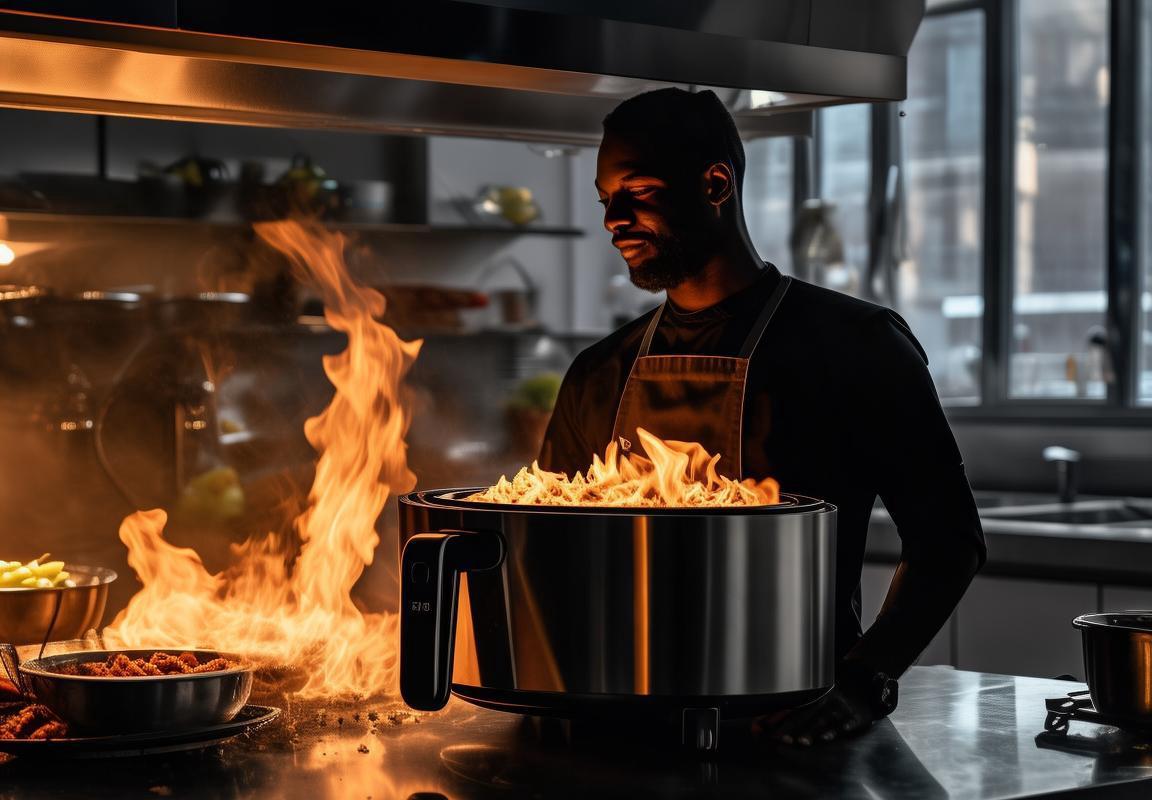
Understanding the European and American Markets
The European and American markets for kitchen appliances, particularly in the culinary sector, exhibit distinct characteristics that shape the demand and adoption of restaurant-grade air fryers. Europe, with its rich culinary heritage, places a strong emphasis on health, innovation, and sustainability, while the United States boasts a diverse culinary landscape with a penchant for convenience and efficiency.
In Europe, the market is driven by consumers’ increasing awareness of health and wellness. The rise of the Mediterranean diet, with its emphasis on olive oil, fruits, vegetables, and whole grains, has influenced the type of cooking methods preferred by chefs and home cooks alike. Restaurant-grade air fryers, which offer a healthier alternative to traditional deep-frying, have found a receptive audience. The compact size and energy-efficient operation of these fryers align perfectly with the European preference for appliances that save space and reduce environmental impact.
The American market, on the other hand, is marked by a fast-paced lifestyle and a significant interest in food technology. American consumers are accustomed to quick, convenient cooking solutions that don’t compromise on quality. The rise of fast-casual dining and the demand for gourmet at-home experiences have created a fertile ground for advanced kitchen appliances. Restaurant-grade air fryers cater to this demand by providing a professional-grade cooking experience in a home setting.
In Europe, the market is segmented geographically, with Northern Europe leading in the adoption of advanced kitchen technologies. Countries like Germany, Sweden, and the Netherlands are known for their innovation and investment in sustainable living solutions, making them early adopters of energy-efficient appliances like air fryers. The Southern European countries, while traditionally associated with deep-frying, have also started embracing air fryers as a way to maintain traditional flavors while reducing fat content.
The American market, conversely, is highly diverse, with varying preferences across different regions. The West Coast, known for its health-conscious population, has been quick to adopt air fryers. Meanwhile, the Midwest and Southern states may have a more conservative approach to cooking technology, but there’s a growing trend towards healthier alternatives. The competitive landscape in the U.S. is dominated by well-established appliance brands that have been successful in marketing air fryers as a must-have kitchen gadget.
In both markets, the trend towards customization and personalization is significant. European consumers are increasingly looking for air fryers that can cater to specific dietary needs, such as gluten-free or low-carb options. American consumers, while also interested in health and wellness, are more focused on the ability to cook a wide variety of foods, from crispy French fries to juicy chicken wings.
The regulatory environment plays a crucial role in shaping the market for restaurant-grade air fryers. In Europe, strict regulations on food safety and appliance energy efficiency have led to a standardized approach to product development. The American market, while less stringent in some areas, also has its own set of standards that manufacturers must adhere to, such as safety certifications and energy consumption guidelines.
In terms of distribution, Europe has a well-established retail landscape, with a mix of large appliance stores, specialty kitchen shops, and online retailers. The U.S. market is similarly robust, with a strong emphasis on online sales and the presence of large home goods retailers. Both markets are seeing an increase in direct-to-consumer sales, as manufacturers recognize the value of building relationships with end-users.
Overall, the European and American markets for restaurant-grade air fryers are dynamic and evolving. They reflect the broader trends in the culinary world, with a growing focus on health, technology, and sustainability. As these markets continue to mature, we can expect to see further innovation and adaptation to meet the needs of both professional chefs and home cooks.
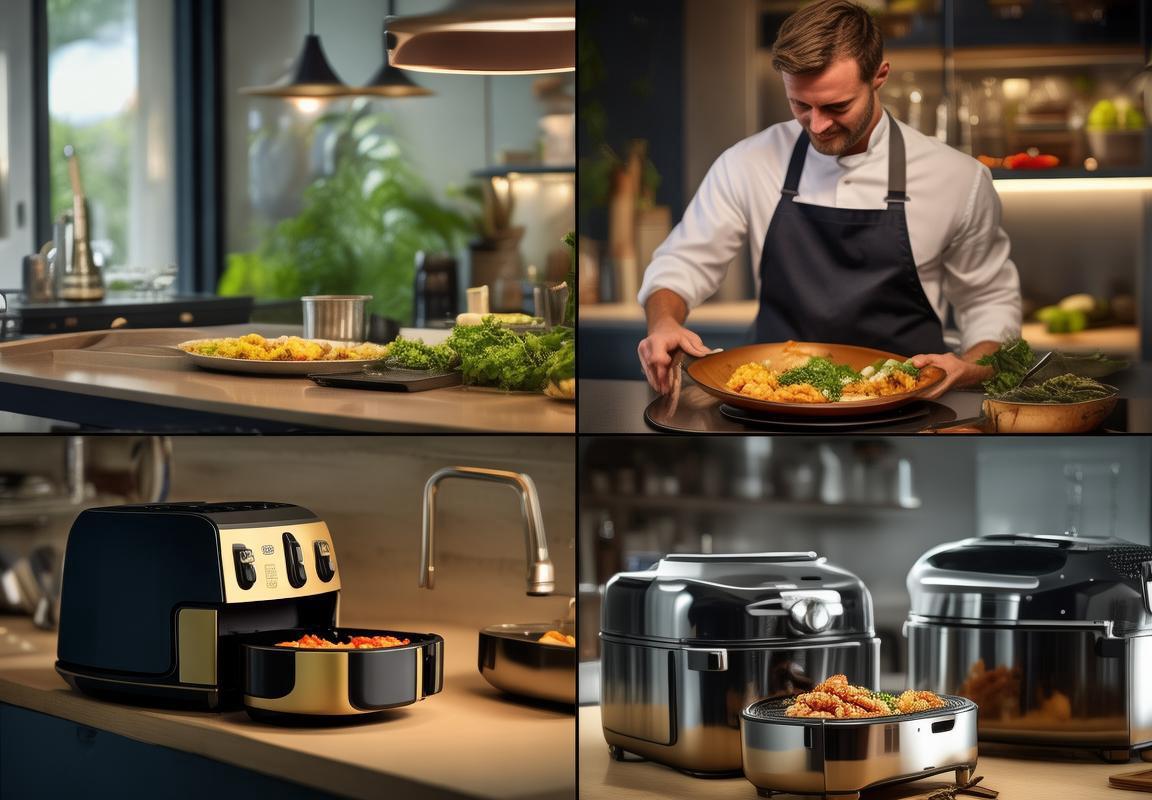
The Demand for High-Quality Kitchen Appliances in Fine Dining
In the realm of fine dining, the expectation for high-quality kitchen appliances is paramount. These tools are not just instruments of culinary creation; they are the heartbeat of a restaurant’s reputation and success. The demand for such appliances is driven by several key factors that define the modern fine dining landscape.
Restaurants, especially those aiming for a place at the top of the culinary hierarchy, understand that the quality of their equipment reflects the quality of their service. A high-end kitchen must be equipped with state-of-the-art appliances that not only enhance the cooking process but also maintain the integrity of the ingredients. From ovens that can reach precise temperatures to blenders that can process delicate sauces with utmost finesse, each appliance is meticulously chosen to support the chef’s vision.
The pursuit of excellence in fine dining requires appliances that can handle the rigors of professional use. The demand for robust and durable kitchenware is high, as chefs are constantly pushing the boundaries of their culinary skills. These professionals need appliances that can withstand heavy use without compromising on performance. High-quality appliances are designed to handle the demands of a busy kitchen, from the intense heat of a searing steak to the delicate temperature control required for delicate desserts.
One cannot underestimate the role of aesthetics in fine dining. The presentation of a dish is as crucial as its taste, and this is where the appearance of kitchen appliances comes into play. Modern restaurants often adopt a minimalist design aesthetic, and their appliances must align with this philosophy. High-quality appliances often feature sleek, modern designs that not only serve a functional purpose but also contribute to the overall ambiance of the dining space.
The demand for high-quality kitchen appliances also stems from the growing emphasis on sustainability and environmental responsibility. Fine dining establishments are increasingly looking for appliances that are energy-efficient and made with sustainable materials. This not only reduces their carbon footprint but also resonates with today’s conscious consumers who are more likely to patronize restaurants that align with their values.
Innovation is another driving force behind the demand for top-notch kitchen appliances. Chefs are always on the lookout for the latest technological advancements that can help them experiment with new techniques and ingredients. From induction cooktops that provide unparalleled control to sous-vide machines that allow for precise temperature regulation, these innovations are integral to pushing the boundaries of culinary art.
The rise of culinary schools and the influx of young, talented chefs into the industry have also contributed to the demand for high-quality appliances. These aspiring chefs are often trained on the most advanced equipment, which sets high standards for their future workplaces. They understand the importance of using the right tools to achieve their desired outcomes, whether it’s creating a perfect emulsion or a perfectly caramelized crust.
Moreover, the competition within the fine dining sector is fierce. Establishments are constantly vying for recognition through accolades like Michelin stars. To earn such prestige, restaurants must demonstrate a commitment to excellence in every aspect, including the appliances that bring their vision to life on the plate.
Finally, the demand for high-quality kitchen appliances is influenced by the ever-evolving palates of consumers. Fine dining guests are increasingly adventurous, seeking out unique flavors and textures. This demand requires chefs to employ a wide range of techniques and ingredients, each of which requires the right equipment to execute successfully. The quest for perfection in every dish ensures that the demand for top-tier appliances remains robust in the fine dining industry.
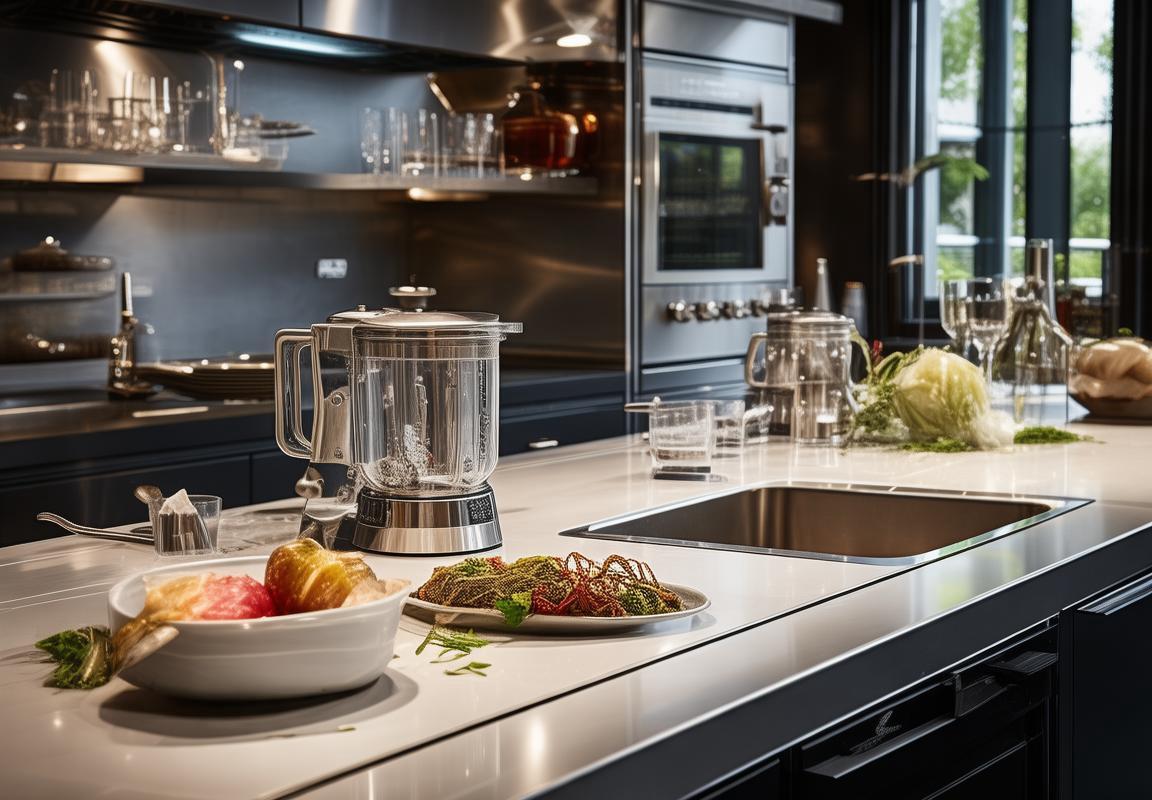
Innovations in Restaurant-Grade Air Fryer Technology
The evolution of restaurant-grade air fryer technology has been nothing short of revolutionary. These appliances, once the domain of home kitchens, have now found their way into the hearts of professional chefs. Here’s a glimpse into the latest innovations that are reshaping the culinary landscape.
Air fryers have traditionally been associated with their ability to mimic deep-frying with a fraction of the oil. However, the latest models are pushing the boundaries of what these devices can do. One significant innovation is the integration of convection fans, which not only circulate hot air around the food but also increase the efficiency of the cooking process. This means chefs can now enjoy the crispy texture of fried foods without the high fat content.
Another breakthrough is the inclusion of temperature control systems that are more precise than ever before. In the past, air fryers often suffered from inconsistent temperatures, leading to uneven cooking and, in some cases, undercooked or overcooked dishes. Modern restaurant-grade air fryers now offer a range of temperature settings, allowing chefs to tailor the cooking process to the specific needs of each dish.
Smart technology has also made its way into the realm of air fryers. Many models now come with digital displays and programmable settings, enabling chefs to set cooking times and temperatures with precision. Some even feature Bluetooth connectivity, allowing for remote monitoring and adjustments. This not only enhances the cooking experience but also allows for better food safety and quality control.
The design of restaurant-grade air fryers has also seen significant advancements. The latest models are not only more powerful but also more user-friendly. Features like non-stick interiors and easy-to-clean components have made these appliances a favorite among busy chefs. Additionally, the compact and sleek designs of modern air fryers save valuable kitchen space, a crucial factor in the limited confines of commercial kitchens.
Energy efficiency is another area where innovations have made a significant impact. The newer models are designed to consume less power while maintaining the same cooking performance. This not only reduces operational costs for restaurants but also aligns with the growing demand for sustainable and eco-friendly kitchen equipment.
The technology within these air fryers has also expanded to include features like auto shut-off and overheat protection. These safety features are essential in a professional kitchen environment where the risk of accidents is higher due to the fast-paced nature of cooking.
In terms of functionality, the latest restaurant-grade air fryers can handle a wide variety of foods. They are not just limited to fried items; many chefs are now using them to roast, bake, and even grill. The versatility of these appliances allows for a broader menu and the ability to experiment with different cooking techniques.
The health benefits of air frying have also played a role in the demand for high-quality air fryers in fine dining. As consumers become more health-conscious, restaurants are looking for ways to offer healthier alternatives without compromising on taste. Restaurant-grade air fryers provide a solution that allows chefs to create delicious, low-fat dishes that appeal to a wider audience.
Innovation in the material used for the cooking chambers has also been a key factor. Many modern air fryers use stainless steel or high-grade aluminum, which not only withstands the rigors of commercial use but also ensures even heat distribution and durability.
The integration of sensors that monitor food moisture levels is another innovation that has gained traction. These sensors help chefs achieve the perfect level of crispiness on the outside while ensuring that the inside of the food is cooked to perfection.
Lastly, the rise of modular and multi-functional cooking systems has opened up new possibilities for chefs. These systems can often be stacked or combined with other kitchen equipment, creating a more efficient and space-saving setup.
In conclusion, the innovations in restaurant-grade air fryer technology have transformed the way professional kitchens operate. From precise temperature control to smart features and health benefits, these appliances are becoming an indispensable tool for chefs looking to elevate their culinary offerings.
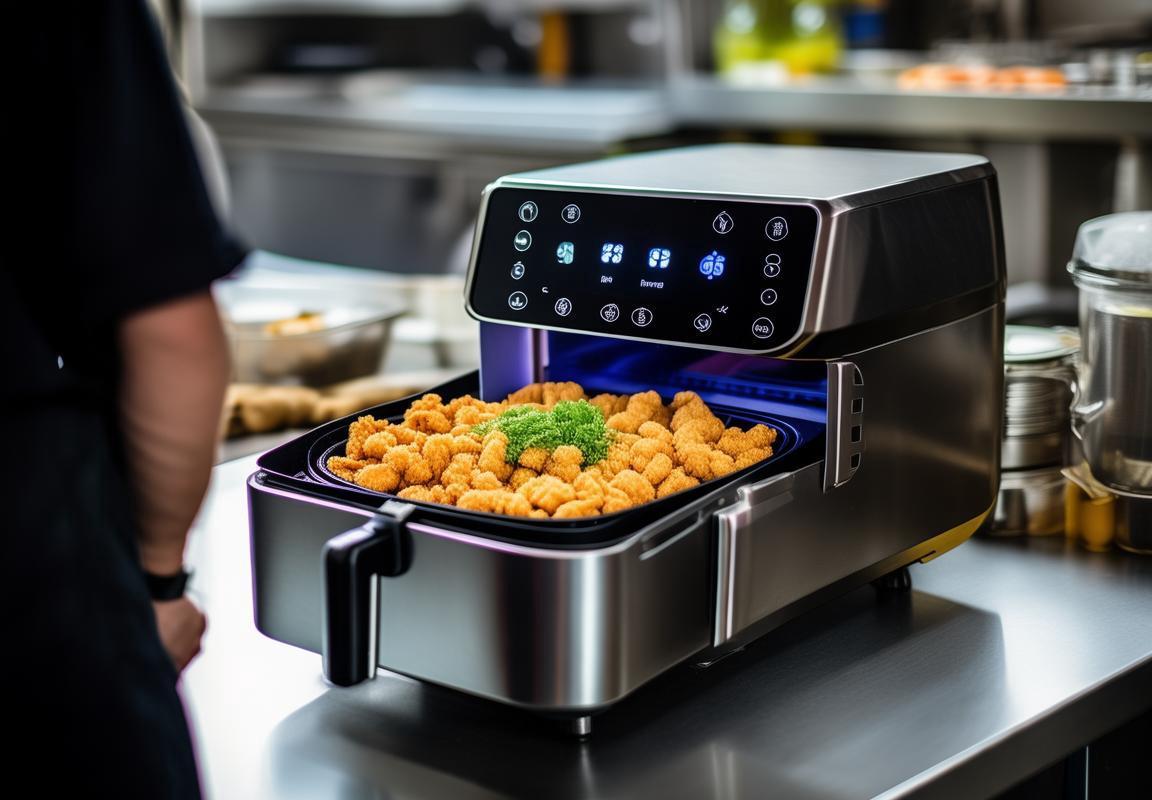
How Factory Direct Sales are Redefining the Market
In the ever-evolving landscape of kitchen appliances, factory direct sales have emerged as a transformative force. This approach bypasses traditional retail channels, offering consumers a more direct connection to the source of their products. Let’s delve into how this strategy is reshaping the market.
The Transparency EdgeFactory direct sales provide unparalleled transparency. Customers can trace the origins of their appliances, ensuring they are getting products that meet rigorous quality standards. This level of transparency builds trust and fosters a sense of loyalty among consumers who value authenticity and ethical manufacturing practices.
Cost EfficiencyOne of the most significant advantages of factory direct sales is the potential for cost savings. By cutting out the middleman, manufacturers can offer their products at a more competitive price point. This cost efficiency is passed on to the consumer, making premium appliances more accessible. The result is a market where value-driven consumers can find high-quality products without the premium markup.
Customization and PersonalizationIn the past, customization was often a luxury reserved for businesses with substantial budgets. Factory direct sales have changed that. Manufacturers can now offer more personalized solutions, tailoring appliances to the specific needs of individual consumers or businesses. This level of customization isn’t just about looks; it extends to functionality and durability, ensuring that each product is perfectly suited to its intended use.
Enhanced Product KnowledgeWith factory direct sales, there’s a direct line of communication between the manufacturer and the consumer. This direct interaction allows for a deeper understanding of customer needs and preferences. Manufacturers can gather real-time feedback, which they can use to improve their products and services. This two-way dialogue fosters a more informed consumer base, who are better equipped to make decisions based on their unique requirements.
Reduced Environmental FootprintFactory direct sales often come with a smaller environmental footprint. By eliminating the need for multiple layers of distribution, manufacturers can reduce packaging, transportation, and energy consumption. This shift towards more sustainable practices resonates with environmentally conscious consumers, who are increasingly seeking out products that align with their values.
Competitive Advantage for ManufacturersFor manufacturers, factory direct sales can provide a competitive edge. By controlling the entire sales process, they can ensure their brand’s message is consistently conveyed and their products are showcased in the best possible light. This direct relationship also allows manufacturers to respond quickly to market trends and consumer demands, staying ahead of the curve in a rapidly changing industry.
Consumer EmpowermentThe factory direct sales model empowers consumers. They gain the ability to compare products directly, making more informed purchasing decisions. This model also encourages manufacturers to be more responsive to customer feedback, as the customer’s voice is heard loud and clear in this direct exchange.
Marketing and Branding OpportunitiesFactory direct sales open up new marketing and branding opportunities. Manufacturers can engage with customers through various digital channels, creating personalized marketing campaigns that resonate with their target audience. This direct engagement can lead to stronger brand loyalty and a more engaged consumer base.
Global ReachFactory direct sales can also expand a manufacturer’s global reach. By selling directly to consumers in different regions, manufacturers can tap into new markets and expand their customer base. This global approach allows for a more diverse product portfolio and the ability to cater to a wider range of consumer preferences.
In conclusion, factory direct sales are redefining the market by offering transparency, cost efficiency, customization, enhanced product knowledge, reduced environmental impact, a competitive advantage for manufacturers, consumer empowerment, marketing opportunities, and global reach. As the industry continues to evolve, this direct connection between producer and consumer is likely to become an even more integral part of the marketplace.
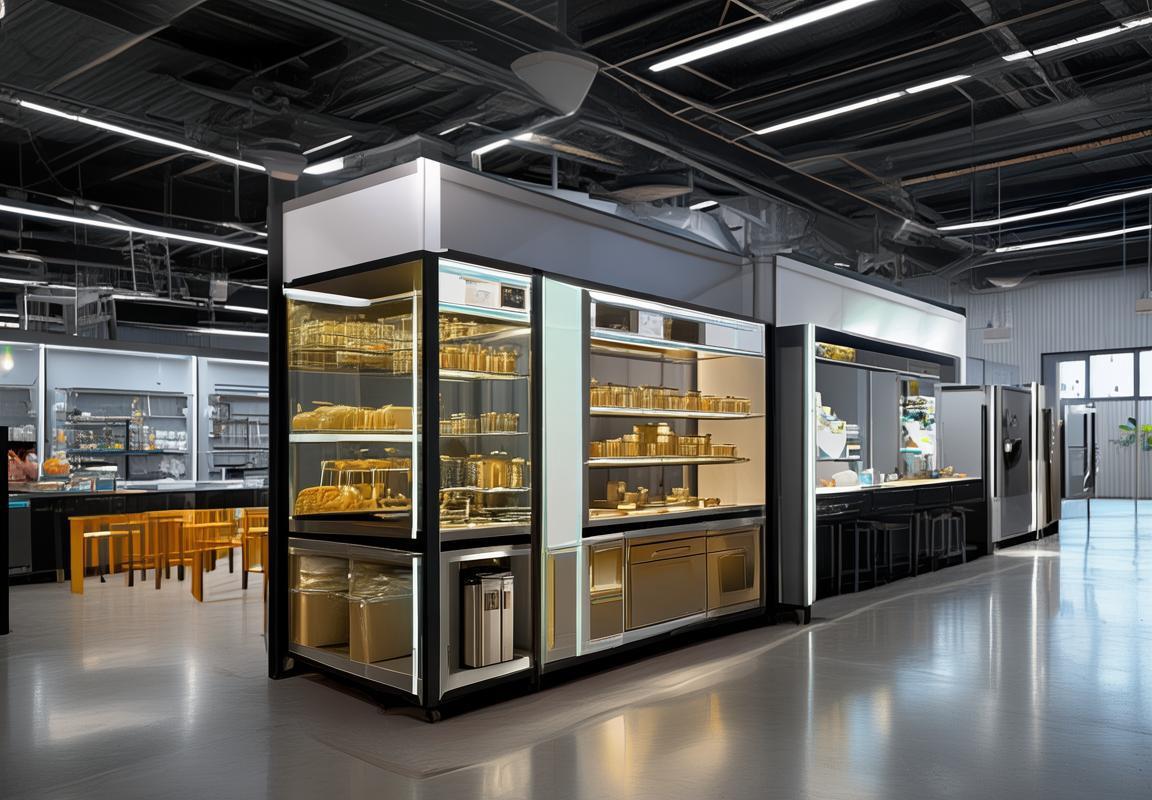
The Benefits of Factory Direct Restaurant-Grade Air Fryers
In the bustling world of commercial kitchen appliances, the shift towards factory direct restaurant-grade air fryers has brought about a host of benefits that are reshaping the culinary landscape. These advanced appliances, designed for the demands of professional kitchens, offer a myriad of advantages that cater to both chefs and business owners alike.
The precision and control that factory direct restaurant-grade air fryers provide are unparalleled. These units are engineered to maintain consistent temperatures, ensuring that each dish is cooked to perfection. This level of control over the cooking process is a game-changer for chefs, who can now achieve restaurant-quality results with every batch of food prepared.
One of the most significant benefits of opting for factory direct restaurant-grade air fryers is the cost-effectiveness they offer. By purchasing directly from the manufacturer, businesses can bypass middlemen and negotiate better pricing. This direct sales model means that the savings are often passed on to the customer, allowing for a more competitive price point without compromising on quality.
Energy efficiency is another key advantage of these air fryers. Traditional cooking methods often require large amounts of oil and a considerable amount of energy to maintain high temperatures. In contrast, restaurant-grade air fryers use a fraction of the oil and operate at lower temperatures, leading to significant energy savings. This not only reduces the operational costs for restaurants but also has a positive impact on the environment.
Factory direct air fryers are also designed with durability in mind. Constructed from robust materials, these appliances can withstand the rigors of a busy kitchen environment. The heavy-duty construction means they can handle constant use without the risk of breakdowns, ensuring minimal downtime and a smooth workflow.
The health benefits of air frying cannot be overstated. These fryers use a circulating fan to mimic the frying process, reducing the need for deep-frying oil by up to 80%. This dramatic reduction in oil content results in dishes that are lower in fat and calories, making them a healthier option for both chefs and customers. The ability to offer lighter, heart-healthy meals can be a major selling point for restaurants looking to attract health-conscious diners.
Modern restaurant-grade air fryers come with a range of features that enhance their usability and efficiency. From digital temperature controls and timer settings to programmable menus and auto-shutoff functions, these appliances are equipped to handle a variety of recipes and cooking times. The intuitive interfaces make it easy for chefs to adjust settings on the fly, ensuring that each dish is cooked just right.
In addition to their technical advancements, factory direct air fryers often come with comprehensive customer support and service packages. From installation assistance to troubleshooting and regular maintenance, manufacturers provide the necessary support to ensure that their products remain in peak condition. This level of service can be invaluable for restaurants, as it minimizes the risk of operational interruptions.
The scalability of factory direct restaurant-grade air fryers is another advantage. These units are available in a variety of sizes and capacities, allowing businesses to choose the perfect fit for their kitchen space and volume of food preparation. This flexibility means that even smaller establishments can enjoy the benefits of professional-grade equipment without the need for a large investment.
The integration of advanced technology into these air fryers has also opened up new possibilities for culinary creativity. Chefs are now able to experiment with a wider range of recipes, knowing that the air fryer will provide the consistent results needed to produce high-quality dishes. This has spurred innovation in the kitchen and has led to the development of unique menu items that stand out in the competitive culinary market.
Finally, the long-term financial benefits of choosing factory direct restaurant-grade air fryers cannot be ignored. While the initial cost may be higher than that of standard appliances, the energy savings, lower maintenance costs, and extended lifespan of these fryers make them a sound investment for any restaurant. The reduced need for frequent replacements and the potential for increased customer satisfaction due to healthier menu options contribute to a more sustainable and profitable business model.
In summary, the benefits of factory direct restaurant-grade air fryers are multifaceted, offering a combination of precision, cost-effectiveness, energy efficiency, durability, health benefits, advanced features, customer support, scalability, culinary innovation, and long-term financial gains. As the demand for high-quality kitchen appliances continues to grow, these fryers are poised to become an indispensable tool in the arsenal of any professional kitchen.
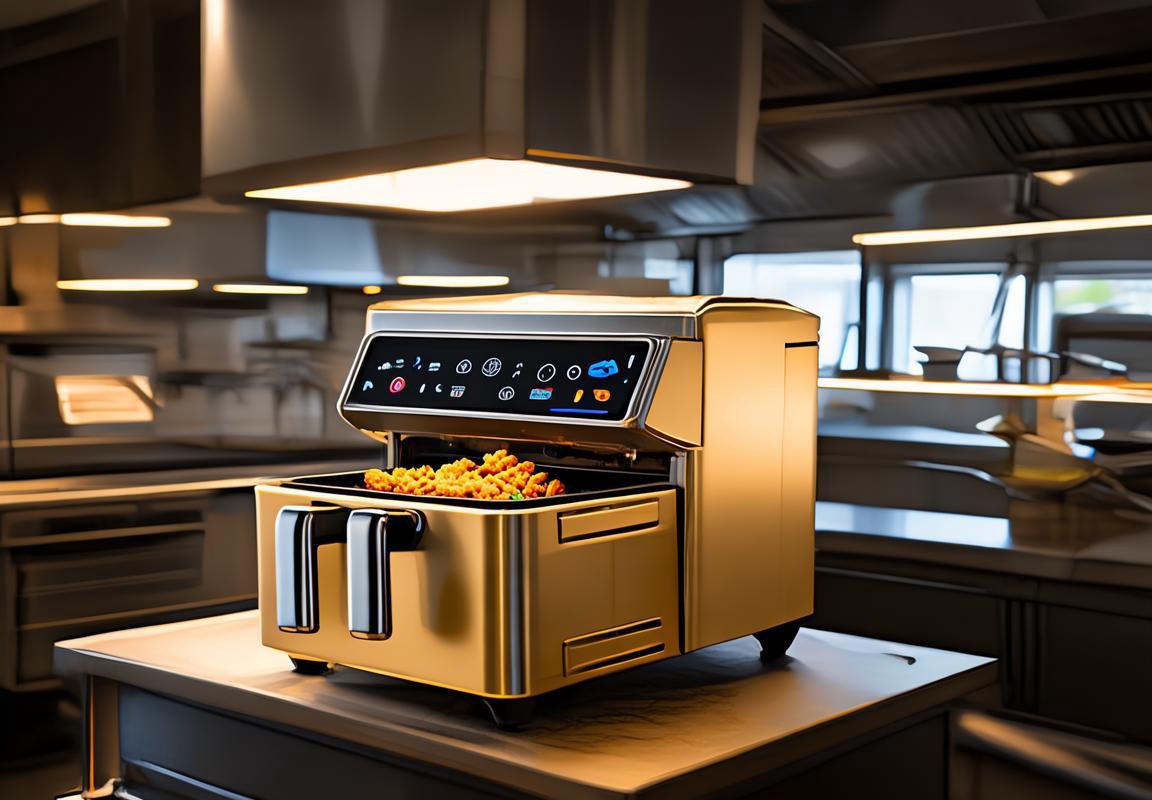
Navigating the Regulatory Landscape
In the ever-evolving world of commercial kitchen appliances, navigating the regulatory landscape is a complex task that requires a keen understanding of local and international standards. This intricate maze ensures that products meet safety, health, and environmental requirements. Here’s a closer look at the challenges and considerations involved in navigating this landscape:
Understanding Local RegulationsLocal regulations can vary greatly from one country to another, and even within regions. For instance, the United States has the Food and Drug Administration (FDA), which oversees the safety of food and food-related products, while the European Union has the European Food Safety Authority (EFSA). These agencies set strict guidelines for appliance design, material usage, and labeling. Compliance with these regulations is not just about meeting the minimum standards; it’s about ensuring that products are safe for use in commercial settings.
Global Harmonization EffortsTo simplify the process for manufacturers and consumers alike, there have been efforts to harmonize regulations across different regions. The Global Harmonization Task Force (GHTF) is one such initiative that aims to align standards for automotive, aviation, and medical devices, among others. However, when it comes to kitchen appliances, harmonization is more challenging due to the diverse range of applications and the need for specialized technologies.
Safety Standards and CertificationsSafety is paramount in the kitchen, and appliances must undergo rigorous testing to ensure they meet these standards. Certifications like CE (Conformité Européenne) mark in Europe, UL (Underwriters Laboratories) listing in the U.S., and the GS (General Standards for Safety) mark in Japan are just a few examples of recognized safety certifications. These certifications are not just about passing tests; they involve a comprehensive evaluation of the product’s lifecycle, from design to disposal.
Environmental RegulationsWith the growing emphasis on sustainability, environmental regulations have become a significant part of the regulatory landscape. Appliances must now be designed with the environment in mind, including considerations for energy efficiency, water usage, and the use of recyclable materials. Regulations like the Energy Star program in the U.S. and the EuP (Energy-related Products) Directive in the EU are pushing manufacturers to innovate and produce greener products.
Labeling and MarketingLabeling is not just about aesthetics; it’s a critical aspect of compliance. Proper labeling ensures that consumers have all the necessary information about the appliance, including its features, usage instructions, and safety warnings. In the U.S., the FTC (Federal Trade Commission) regulates advertising and marketing practices, while in Europe, the EEA (European Economic Area) has specific guidelines for the marketing of products.
Keeping Up with ChangesRegulatory landscapes are dynamic, with new laws and amendments being introduced regularly. Staying informed about these changes is crucial. Manufacturers must invest in legal teams or consultants who specialize in regulatory affairs to keep up with the latest developments. Failure to do so can result in costly fines, product recalls, or even the closure of operations.
Cross-Border ChallengesFor companies looking to expand into new markets, navigating the regulatory landscape becomes even more complex. Each country has its own set of rules, and what might be compliant in one country could be illegal or non-compliant in another. This requires a thorough understanding of international trade laws and the ability to adapt products to meet multiple sets of standards.
Training and Quality ControlEnsuring that employees are trained in regulatory compliance is essential. From designers and engineers to sales and marketing staff, everyone involved in the product lifecycle should be aware of the regulations that apply to their work. Quality control processes must also be stringent, with checks at every stage to ensure that products meet the required standards.
In conclusion, navigating the regulatory landscape is a multifaceted challenge that requires dedication, expertise, and a commitment to excellence. From safety standards to environmental concerns, and from labeling to marketing, the complexities of regulatory compliance demand a proactive approach from manufacturers to ensure they can continue to provide high-quality products to the global market.

Case Studies: Successful Implementations of Factory-Grade Air Fryers
In the world of professional cooking, the adoption of factory-grade air fryers has become a testament to the evolving landscape of culinary technology. Let’s delve into a few case studies that showcase the successful integration of these advanced appliances into various fine dining establishments.
At the helm of one of the city’s most esteemed restaurants is Chef Maria, who has been revolutionizing the menu with the help of a state-of-the-art air fryer. This particular model, a factory-grade unit, boasts a rapid preheat function and precise temperature control, allowing Maria to create crispy, golden-brown dishes with minimal oil.
Chef Maria’s air fryer has been a game-changer for her kitchen. The ability to produce restaurant-quality French fries with a fraction of the fat has delighted her patrons while cutting down on the kitchen’s carbon footprint. The machine’s durability and consistent performance have made it a staple in her daily operations.
Over in the bustling streets of Paris, a quaint bistro has been turning heads with its innovative approach to cooking. The owner, Thierry, discovered that his new restaurant-grade air fryer was not only efficient but also versatile. He uses it to prepare everything from chicken wings to beignets, all with a light, crispy exterior that keeps customers coming back for more.
Thierry’s bistro has seen a significant boost in sales since implementing the air fryer. The convenience of cooking a variety of dishes with one appliance has streamlined his kitchen operations and reduced the time spent on prep work. The cost savings from using less oil have also contributed to the restaurant’s profitability.
In a busy steakhouse in Chicago, the head chef, Emily, has found that her restaurant-grade air fryer is the perfect complement to her sizzling grill. She uses the air fryer to prepare crispy sides like roasted Brussels sprouts and sweet potato fries, which are a hit with her customers.
Emily’s air fryer is not just a tool for side dishes; it’s also instrumental in preparing appetizers. The ability to crisp up items like onion rings and mozzarella sticks in a healthy way has made these popular items more accessible to health-conscious diners. The consistent results from the air fryer have also helped Emily maintain the high standards of her kitchen.
A sushi restaurant in New York has also seen the benefits of integrating a factory-grade air fryer into their menu. Chef Hiro, known for his commitment to quality and freshness, was initially skeptical about the technology. However, the air fryer’s ability to cook sushi rice without the risk of burning or sticking has become an essential part of his sushi-making process.
Chef Hiro’s air fryer has not only improved the texture of his sushi rice but also reduced the kitchen’s energy consumption. The machine’s compact size has also allowed him to maximize the use of his kitchen space, which is crucial in a bustling restaurant environment.
In a coastal town in California, a seafood restaurant has embraced the air fryer as a sustainable alternative to traditional frying methods. Chef Carlos has been using the appliance to prepare a variety of seafood dishes, including crispy calamari and golden fish fillets, all with a lower environmental impact.
The air fryer has not only allowed Chef Carlos to offer his customers healthier options but has also increased the restaurant’s sustainability profile. The positive feedback from customers who appreciate the healthier cooking method has translated into higher customer satisfaction and loyalty.
These case studies highlight the diverse applications of factory-grade air fryers in fine dining establishments. From reducing fat content to enhancing the texture of various dishes, these appliances are becoming an indispensable part of modern kitchens. The success stories of these chefs and restaurateurs underscore the importance of embracing innovative technology that not only improves food quality but also supports sustainable practices.
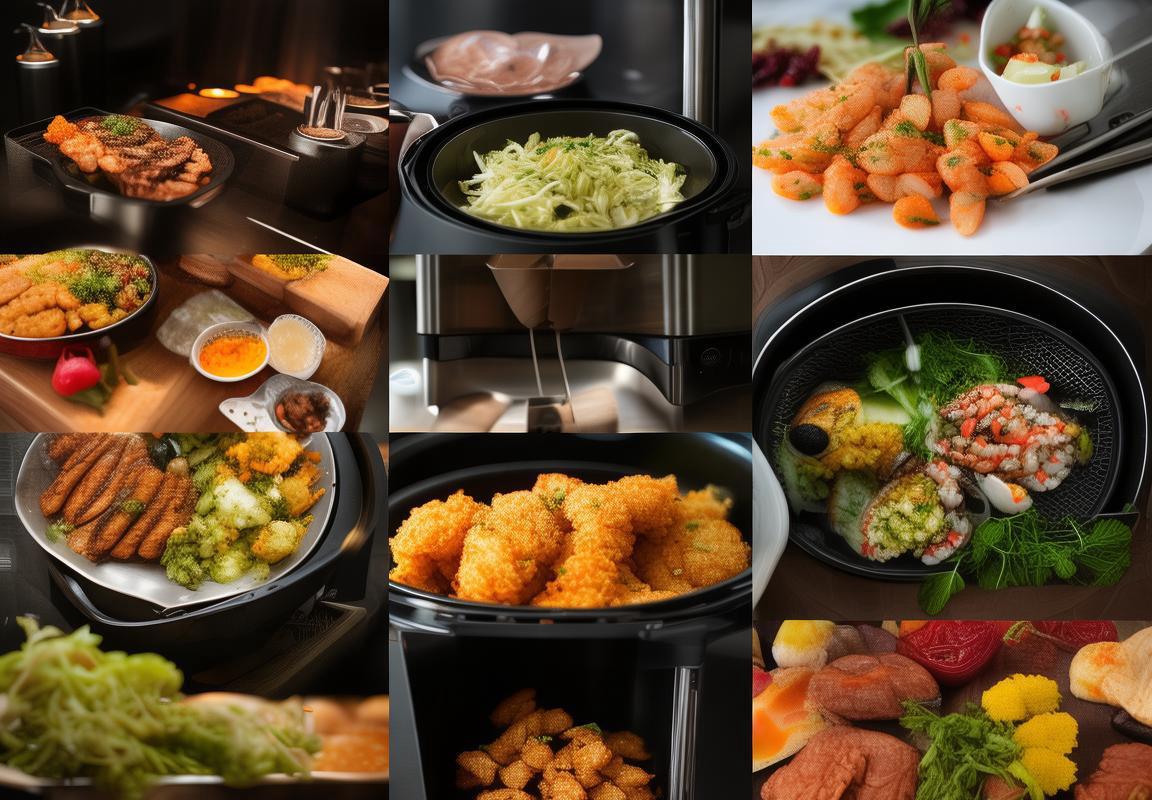
Future Trends: Predictions for the European and American Markets
The European and American markets have long been at the forefront of technological advancements, particularly in the realm of kitchen appliances. As we look to the future, several trends are emerging that are poised to shape the landscape of the European and American markets, influencing everything from consumer preferences to industrial production.
In Europe, the emphasis on health and wellness has been a driving force behind the demand for high-quality kitchen appliances. This trend is not only reflected in the rise of air fryers but also in the preference for energy-efficient and eco-friendly products. Consumers are increasingly seeking appliances that not only enhance their culinary experiences but also align with their values of sustainability.
The American market, on the other hand, is characterized by its dynamic and diverse consumer base. There’s a strong trend towards convenience and speed, which has led to the popularity of kitchen gadgets that simplify cooking processes. At the same time, there’s a growing segment of health-conscious consumers who are looking for alternatives to traditional cooking methods that reduce fat and calories.
One of the key trends in both regions is the integration of smart technology into kitchen appliances. Smart air fryers, for instance, offer users the ability to control their appliances remotely through smartphones, providing a level of convenience that was once unimaginable. This technology is not only convenient but also provides valuable data that can help manufacturers improve their products and tailor them to consumer needs.
In Europe, the market is also seeing a surge in the demand for professional-grade appliances that can be used both in commercial kitchens and at home. This dual-purpose trend is driven by the desire for high-end cooking experiences and the rise of home chefs who are looking to replicate restaurant-quality meals in their own kitchens.
In the American market, the rise of meal delivery services has had a significant impact on kitchen appliance sales. As more consumers opt for ready-to-eat meals, there’s an increased interest in appliances that can quickly and efficiently prepare homemade dishes. This has led to a demand for air fryers that can handle a variety of cooking functions, from frying to roasting and baking.
Another trend that is gaining traction in both Europe and America is the use of air fryers in commercial settings. Fast-casual restaurants and food trucks are embracing these appliances for their ability to produce crispy, golden foods with minimal oil. This shift towards healthier cooking methods is not only beneficial for customers but also for the bottom line, as it can reduce operational costs.
As we look ahead, the integration of AI and machine learning into kitchen appliances is expected to become more prevalent. These technologies can analyze cooking patterns, suggest improvements, and even predict maintenance needs, leading to more efficient and reliable appliances.
In Europe, the market is also likely to see an increase in the use of air fryers in community kitchens and shared spaces. With a focus on reducing food waste and promoting community dining, these appliances offer a solution that is both practical and sustainable.
In the American market, there’s a growing interest in the use of air fryers in outdoor cooking. As people spend more time in their gardens and on patios, there’s a need for appliances that can provide the same quality of cooking as indoor models but are also suitable for outdoor use.
Finally, the European and American markets are likely to see a continued emphasis on customization and personalization. Consumers are increasingly looking for appliances that can be tailored to their specific needs and preferences, whether it’s through adjustable cooking settings or modular designs.
In conclusion, the European and American markets are poised for significant changes as technology continues to evolve. From the integration of smart features to the rise of professional-grade appliances for home use, these markets are setting the stage for a new era of kitchen innovation.

Conclusion: Embracing Efficiency and Quality in Professional Kitchens
In the ever-evolving landscape of professional kitchens, efficiency and quality are paramount. The integration of advanced appliances, such as restaurant-grade air fryers, has transformed the way chefs approach cooking. These innovations not only enhance the culinary experience but also streamline operations, reducing waste and energy consumption. As we look back at the journey of these appliances and forward to what lies ahead, it’s clear that embracing efficiency and quality is more than just a trend—it’s a necessity for any kitchen aiming to excel in the competitive culinary world.
The rise of restaurant-grade air fryers has brought about a revolution in the way chefs approach fat reduction and health-conscious cooking. These fryers have become a staple in many professional kitchens, offering a healthier alternative to traditional deep-frying methods. The technology behind these fryers has advanced significantly, allowing for precise temperature control and optimal cooking times, which in turn, ensures the integrity of flavors and textures.
As the demand for high-quality kitchen appliances has surged, so has the importance of maintaining a balance between performance and sustainability. Professional kitchens are now more conscious of their environmental footprint, and as such, energy-efficient appliances are becoming a priority. This shift has led to the development of restaurant-grade air fryers that not only meet the stringent requirements of chefs but also align with the global push for greener practices.
Factory direct sales have played a pivotal role in redefining the market. By cutting out the middleman, manufacturers can offer their products at competitive prices while maintaining the highest standards of quality. This direct-to-consumer approach has empowered chefs to select the best appliances for their needs, often leading to more personalized and innovative kitchen solutions.
The benefits of factory direct restaurant-grade air fryers are numerous. For one, they often come with longer warranties and more comprehensive customer support, as manufacturers have a direct line to their end-users. Additionally, these fryers are typically designed with the end-user in mind, featuring user-friendly interfaces and durable construction that can withstand the rigorous demands of a professional kitchen.
Navigating the regulatory landscape is a challenge that all manufacturers and operators must face. Different regions have varying standards and certifications that appliances must meet to be deemed safe and compliant. This can include electrical safety, emissions, and material usage regulations. Understanding and adhering to these regulations is crucial, as non-compliance can lead to costly delays and damage to a brand’s reputation.
Case studies have shown that successful implementations of factory-grade air fryers have had a profound impact on kitchens around the world. For instance, a high-end steakhouse in Chicago replaced its traditional fryers with a restaurant-grade air fryer, resulting in a 50% reduction in oil usage and a 30% decrease in energy consumption. The quality of the food remained exceptional, and the kitchen staff praised the ease of use and the consistent results.
Looking ahead, future trends in the European and American markets for restaurant-grade air fryers are promising. As health consciousness continues to grow, we can expect to see an increase in demand for appliances that offer healthier cooking options. Additionally, the integration of smart technology into these fryers is likely to become more prevalent, allowing for remote monitoring and control, as well as predictive maintenance to prevent downtime.
In conclusion, the journey of restaurant-grade air fryers from innovation to mainstream adoption is a testament to the industry’s commitment to efficiency and quality. As these appliances continue to evolve, they will undoubtedly play a crucial role in shaping the future of professional kitchens. The emphasis on health, sustainability, and direct sales will remain key drivers, ensuring that kitchens are equipped with the tools they need to not only meet but exceed the expectations of both customers and chefs.